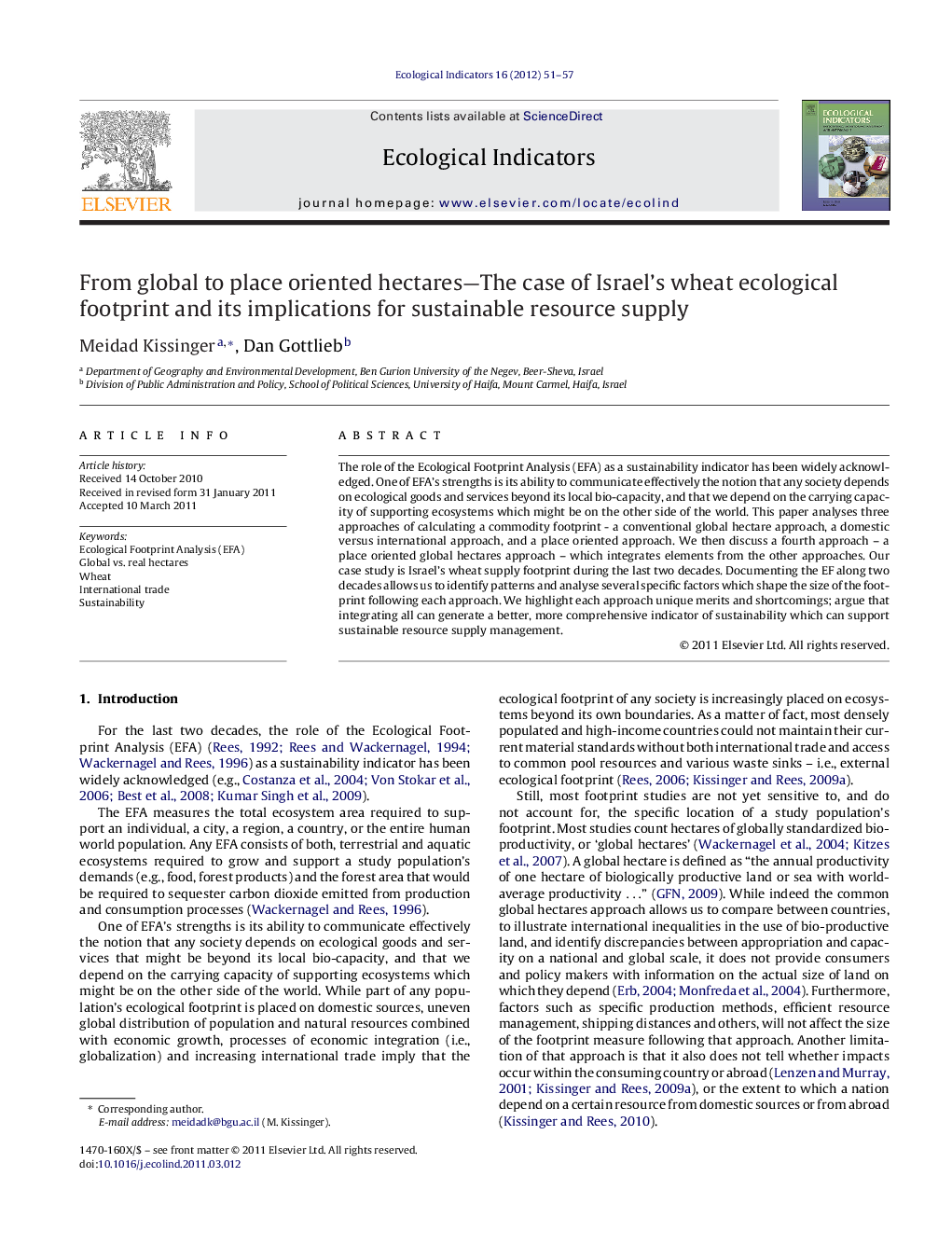| Article ID | Journal | Published Year | Pages | File Type |
|---|---|---|---|---|
| 4373950 | Ecological Indicators | 2012 | 7 Pages |
The role of the Ecological Footprint Analysis (EFA) as a sustainability indicator has been widely acknowledged. One of EFA's strengths is its ability to communicate effectively the notion that any society depends on ecological goods and services beyond its local bio-capacity, and that we depend on the carrying capacity of supporting ecosystems which might be on the other side of the world. This paper analyses three approaches of calculating a commodity footprint - a conventional global hectare approach, a domestic versus international approach, and a place oriented approach. We then discuss a fourth approach – a place oriented global hectares approach – which integrates elements from the other approaches. Our case study is Israel's wheat supply footprint during the last two decades. Documenting the EF along two decades allows us to identify patterns and analyse several specific factors which shape the size of the footprint following each approach. We highlight each approach unique merits and shortcomings; argue that integrating all can generate a better, more comprehensive indicator of sustainability which can support sustainable resource supply management.
